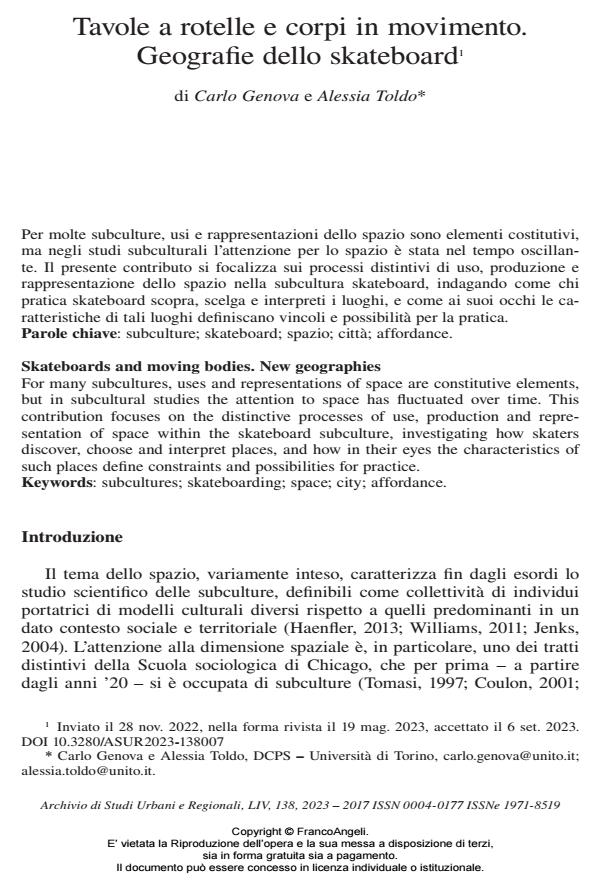Tavole a rotelle e corpi in movimento. Geografie dello skateboard
Titolo Rivista ARCHIVIO DI STUDI URBANI E REGIONALI
Autori/Curatori Carlo Genova, Alessia Toldo
Anno di pubblicazione 2024 Fascicolo 2023/138
Lingua Italiano Numero pagine 24 P. 136-159 Dimensione file 449 KB
DOI 10.3280/ASUR2023-138007
Il DOI è il codice a barre della proprietà intellettuale: per saperne di più
clicca qui
Qui sotto puoi vedere in anteprima la prima pagina di questo articolo.
Se questo articolo ti interessa, lo puoi acquistare (e scaricare in formato pdf) seguendo le facili indicazioni per acquistare il download credit. Acquista Download Credits per scaricare questo Articolo in formato PDF

FrancoAngeli è membro della Publishers International Linking Association, Inc (PILA)associazione indipendente e non profit per facilitare (attraverso i servizi tecnologici implementati da CrossRef.org) l’accesso degli studiosi ai contenuti digitali nelle pubblicazioni professionali e scientifiche
Per molte subculture, usi e rappresentazioni dello spazio sono elementi costitutivi, ma negli studi subculturali l’attenzione per lo spazio è stata nel tempo oscillante. Il presente contributo si focalizza sui processi distintivi di uso, produzione e rappresentazione dello spazio nella subcultura skateboard, indagando come chi pratica skateboard scopra, scelga e interpreti i luoghi, e come ai suoi occhi le caratteristiche di tali luoghi definiscano vincoli e possibilità per la pratica.
Parole chiave:subculture; skateboard; spazio; città; affordance.
Carlo Genova, Alessia Toldo, Tavole a rotelle e corpi in movimento. Geografie dello skateboard in "ARCHIVIO DI STUDI URBANI E REGIONALI" 138/2023, pp 136-159, DOI: 10.3280/ASUR2023-138007